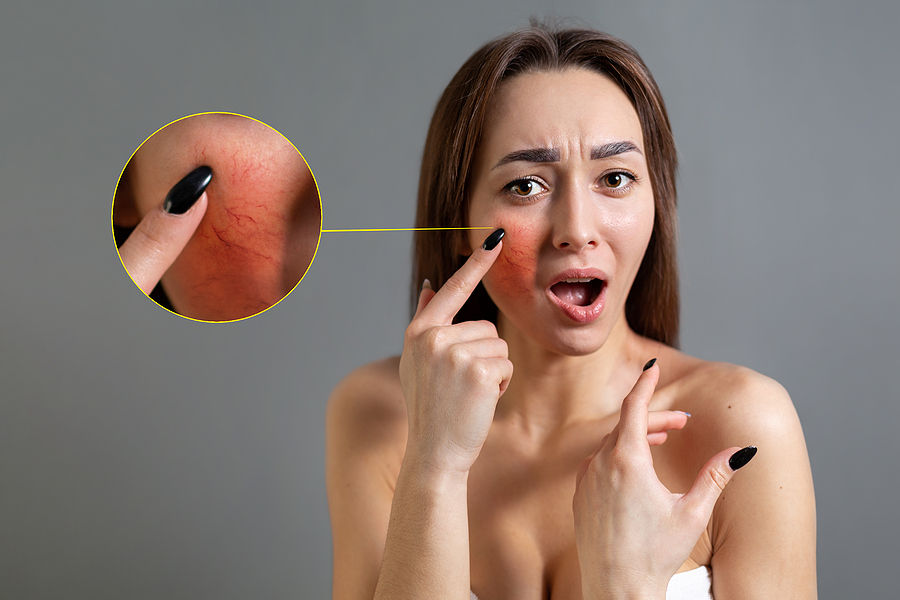Are you confused about the media messages around fat? If so, you aren’t alone. For a long time the media and marketing companies sent the message that fat is the enemy. More recent stories dispute that claim, and the result is that many women are left confused, not knowing what to believe.
In the clinic, I talk to so many women who are concerned about fat. Often, my patients are convinced that eating too much fat in their diet will make them fat. But that’s simply not the truth. In fact, an extremely low-fat diet will not regulate your weight, nor will it enhance your health. Truth be told, if you don’t get enough fat in your diet, you will actually be less healthy than if you were to consume healthy fats in your diet.
Omega-3 Fatty Acids
Luckily our society, in general, is becoming more educated and informed about the importance of fats, especially omega-3 essential fatty acids, in the diet. Next time you are at your local grocery store take notice of how many times you see the phrase “good source of omega-3” on food packages. This is no accident; food manufacturers have discovered that marketing their items as such will help increase their sales. But it’s still confusing because so many people do not understand the difference between these good fats and saturated fats,which are present in many processed foods.
Research has confirmed that omega-3 fatty acids can have an excellent effect on impacting degenerative diseases, such as heart disease, hypertension, rheumatoid arthritis, Alzheimer’s, diabetes, and many others. There are anti-inflammatory properties in omega-3 fatty acids and these have shown to have a positive effect for women. This is especially true for those going through menopause; Omega-3 fatty acids have an impact on the preservation of the heart, breast, and bone health, and better yet, they can balance out mood.
I know that it sounds too good to be true, but through the years I have seen in my practice that omega-3 essential fatty acids indeed work wonders. That is why they are considered essential. From your heart to your mind to all the cells in your body, omega-3s are the best kind of fats for your health.
What’s So Essential About Essential Fatty Acids?
Many women who come to the clinic have asked “What’s the difference between regular fat and “essential” fat?” The answer, put simply, is that your body is not able to create essential fatty acids (EFAs), so you have to get them from what you eat.
There are two forms of EFAs (omega-3 and omega-6), and they are found in the membranes of every cell in your body! If we look at the molecular level, EFAs help protect and keep your cardiovascular, musculoskeletal, gastrointestinal (GI), and immune systems functioning at their best. EFAs help to insulate your nerve cells and they produce molecular messengers that are part of your central nervous system and your body’s immunity.
Listed below are some ways to help you obtain omega-3 and omega-6 fatty acids. Please note that there are many foods that have both omega-3 and omega-6, and some of these are included on both lists.
Omega-3 Sources:
- Canola oil
- Eggs
- Flaxseed
- Hempseed oil
- Marine microalgae – most algae-based supplements contain docosahexaenoic acid (DHA), but not eicosapentaenoic acid (EPA)
- Pumpkin seeds
- Seafood – sources that are both high in omega-3 and low in environmental contaminants include anchovies, herring, mackerel, oysters, sardines, wild salmon and sardines
- Walnuts
Omega-6 Sources:
- Borage oil
- Canola oil
- Corn oil
- Eggs
- Evening primrose oil
- Safflower oil
- Soybean oil
- Sunflower oil
When reviewing the lists above, you may have noticed that olive oil didn’t appear on either. That’s because olive oil has oleic acid (omega-9) and palmitic acid, a saturated fatty acid. Olive oil does not have any omega-3 or omega-6 fatty acids. It is still very good for your healthy lifestyle because of its bioflavonoid content. Olive oil is a large part of the Mediterranean diet, which has been shown to be one of the healthiest diets to consume.
The Magic Balance Between Omega-3s and Omega-6s
In order to be clear, and differentiate between the two, omega-3 fatty acids are usually referred to as “good fats” while the omega-6 fatty acids are called “bad fats.” This is because we have too much omega-6 and not enough omega-3 incorporated into our daily food intake. In general, omega-6 fatty acids favor inflammation, whereas the omega-3 fatty acids counter it. The inflammation then contributes to the diseases that the omega-3 fatty acids are known to help.
But don’t be confused; Omega-6 is still an EFA, and here’s why. There is an essential healthy balance, and both omega-3 and omega-6 are necessary for optimal functioning of your body. The right ratio of omega-3 to omega-6 actually decreases inflammation.
Click here to read our many informative articles about inflammation.
This balanced ratio is important for long term health and well-being. Researchers indicate that the best ratio of omega-6 to omega-3 is about 2:1 and 4:1. But a typical U.S. diet has a ratio between 10:1 and 30:1!
This imbalance, which is tipped toward omega-6 over the omega-3 fatty acids, is generally seen because the U.S. diet is loaded with animal fats (such as corn-fed beef) and corn products, and the diet is low in seafood, seeds, and nuts. In addition, the U.S. diets rely on processed, packaged food, fast foods, and fried foods (high in hydrogenated oils or trans fats). Trans fats are metabolized differently from other fats, and they interfere with the conversion of dietary fats. More and more research is showing the damaging effects of trans fats and I am sure more will come as time goes by.
“Bad” fats cannot be found in nature. These are the artificial trans fats that are created by adding extra hydrogen atoms to produce a soft, yet solid, room temperature product. This in turn helps to prolong the shelf-life of processed foods, such as cookies, crackers, breads, spreads, sauces, fried foods, and snack foods. Trans fats tend to raise the “bad” (LDL) cholesterol and can greatly increase the risk of heart disease.
I can’t advocate enough for being a smart shopper; read the labels of everything you purchase! If you see “hydrogenated” or “partially hydrogenated” in the ingredients list, don’t buy it. These food items will never be part of a healthy diet. In addition, federal regulations allow the label to say “zero trans fats,” if the content is less than half a gram per serving. Be sure to read the serving size to determine if has been minimized to a small proportion. Recently the serving sizes were changed to accommodate this change in the labeling.
How Omega-3s Prevent Disease
The beauty of omega 3s is that they make such a profound difference in your health and are also quite affordable and easily accessible. They are so good for us because of their anti-inflammatory properties. Omega-3s have long been associated with prevention and treatment of many illnesses, including:
- Alzheimer’s disease
- Arthritis
- Asthma
- Attention Deficit Hyperactivity Disorder
- Breast, colon, and prostate cancers
- Burns
- Depression/bipolar disorders
- Diabetes
- Heart disease
- High blood pressure
- High cholesterol
- Obesity
- Osteoporosis
- Schizophrenia
- Skin disorders
- Stroke
It is no surprise that omega-3 fatty acids are one of the most researched topics in the scientific community. They are also one of the most celebrated dietary essentials among people who live a health conscious lifestyle, incorporating whole health into their daily life. The baffling question that remains is why the intake of omega-3 fatty acids continues to decline.
Women and Omega-3s
I strongly urge you to begin to supplement your diet so it includes omega-3 fatty acids. I’ve recommended the use of omega-3 at the clinic for close to 30 years and many women have seen great improvement in their health when they take this small step. Taking omega-3 fatty acids can help is so many areas, such as decreasing menstrual cramps, menopausal symptoms, and even breast cancer.
Menstrual Support
Research has actually found a link between increased menstrual pain and low omega-3 blood concentrations. Menstrual cramps (dysmenorrhea) happen when your cell membranes release omega-6 fatty acids, which produce pro-inflammatory eicosanoids. As a result, cramps, headache, nausea, or other symptoms may be present.
Infertility and Premature Births
Research continues at a rapid rate when it comes to omega-3s and their connection to infertility and premature births. In one study there was an increase in fertility rates with supplements of omega-3. Scientists found that omega-3 supplementation reduced clotting in the endometrial cells that line the uterus, and this improved the implantation rates of fertilized eggs. Alternatively, an imbalance of the omega-6 to omega-3 ratio has been connected to polycystic ovarian syndrome (PCOS), which can contribute to infertility.
Research has also shown that if a pregnant woman increases her omega-3 intake, her premature birth risk drops by up to 50 percent. In addition, fetal brain development benefits from omega-3 supplementation, and this continues after the birth. A pregnant woman who adds omega-3s to her diet for her infant’s development and health will also decrease the likelihood of postpartum depression. The benefits just keep getting better.
Cancer
Furthermore, if you have a history of cancer, there is research being conducted about the effect of various types and quantities of fats on tumor growth. Fatty acids have been found to be protective or harmful, depending on the situation. However, an excess of the pro-inflammatory eicosanoids from omega-6 fatty acids can have a negative effect on your immune system, and this could be the reason for increased growth of certain cancers.
The omega-3 metabolites counterbalance those of omega-6s, and researchers are studying ways to use omega-3s to block tumor growth. Studies in animals have shown that a diet that is high in omega-3s can slow tumor growth. People who follow a Mediterranean diet (rich in omega-3s and other phytonutrients) are 56 percent less likely to develop cancer and are 61 percent less likely to die from it. Wow!
Omega-3 Fatty Acids and Menopause
There is even more to the story as it pertains to menopausal symptoms. Omega-3 fatty acids have been shown to help many of the menopausal symptoms that some women experience. Low blood levels of omega-3s are connected to inflammation, which causes many health issues in menopause, such as osteoporosis, heart disease, vaginal dryness, thinning skin and hair, joint pain, and dry eyes. Omega-3s can soothe the inflammation. Let’s take a look at some specific symptoms that omega-3s can help with:
Hot Flashes
Two studies, done in 2005 by Italian scientists, reported a “progressive and highly significant reduction” in hot flashes with the introduction of omega-3s, possibly because of the omega-3 influence on nerve cell membranes or possibly by modulating neurotransmitter function. A diet high in omega-3s is thought to be why Japanese women (whose diets are rich in fish, seaweed, and soy) have fewer adverse symptoms of menopause than American women do.
Osteoporosis
Your bones are always being broken down (resorption) and rebuilt. When resorption exceeds the rebuilding, then the bone mass deteriorates and can cause osteoporosis. There are some omega-6 derivatives that stimulate bone resorption. You can always start to rebuild good bones by having the omega-3 fatty acids counteract the omega-6 fatty acids to prevent and treat osteoporosis. It really is never too late, as I often see with my patients – even in their 70’s.
Mood, Affect and Memory
Mood, affect, and memory are often times challenging areas, especially as people age. There is research showing the possibility that omega-3s may prevent, and perhaps treat, depression. They may also help people who are struggling with personality and behavioral problems, such as aggression. Scientists have found that people with high omega-3 levels in their blood had more grey matter in the brain sectors that are linked to positive emotions and moods. However, people with mild to moderate depression symptoms showed decreased grey matter in those same areas. There is additional research needed to find out if omega-3s actually cause this phenomenon – however, healthy omega-3 levels can give you a more positive outlook on life and lower your rate of memory loss. Thus far the research is positive when it comes to mood and depression.
Cardiovascular Disease
There are women, especially those over 40, whose lipid profiles show a high ratio of triglycerides to “good” (HDL) cholesterol. They are more at risk for cardiovascular disease. Fish oil supplements are high in omega-3s and offer increased protection for your heart and blood vessels by decreasing your triglyceride levels and increasing your HDL. Taking omega-3 supplementation is a good idea if you’re on conventional hormone replacement therapy (HRT), because HRT can increase triglyceride levels to harmful levels.
Lower Heart Rate Equals Longer Life?
Living longer just might be the best result of taking omega-3s. Researcher Jørn Dyerberg, who is known for his groundbreaking work on omega-3s, was first to notice the absence of heart disease among Greenland’s indigenous people. Dyerberg believes that this was directly related to the high dietary omega-3 content of the diet. And the effect of decreasing the number of heartbeats during a lifetime is that the heart beats longer ( that is also why so many recommend meditation to help with cardiovascular issues). These people have a longer lifespan. Initial studies show that DHA is the primary omega-3 fatty acid that lowers heart rate and improves the resilience of heart rate variability. Together these lower the risk of sudden cardiac events that cause death.
Now you know why omega-3 fatty acids are necessary to good health. Let’s take a look to discover what kind of omega-3 is best and how much omega-3 you should take.
How Much Should You Take?
The American Heart Association daily recommendation is 1–3 grams of eicosapentaenoic acid (EPA) and docosahexaenoic acid (DHA). For some medical diseases, higher doses (up to 4 grams per day) of omega-3 products can be used safely. There are recent studies indicating that higher-dose omega-3 fatty acids can be very helpful to lower high triglycerides. I suggest that you discuss this with your healthcare provider if you plan to use more than 3 grams of omega-3 daily.
How to Choose the Best Omega-3 Supplement
The best way to get omega-3 fatty acids in your diet is from fresh sources. However, there are some very good supplements. You should choose a supplement based on the quality and purity of the product. The best omega-3 fish oils should come from deep-water fish (these fish are generally less polluted). However, oily fish can have high levels of lethal pesticides, dioxins, polychlorinated biphenyl (PCB), or heavy metals (such as lead and mercury), which need to be removed in the preparation process for omega-3 supplements. There are advanced omega-3 extraction and distillation processes that efficiently remove the toxins and impurities and also maintain stability and freshness. If you want to know about the purity, contact the manufacturer and request a certificate of analysis. This will display the results of tests for levels of lead, mercury, and cadmium in each batch.
I know your healthy lifestyle is always based on balance, not overabundance. When looking for an omega-3 supplement, here are some things to look for:
- Look for natural forms that have been purified by molecular extraction, to guarantee that the product does not contain mercury or other pollutants.
- Look for additional antioxidants.
- Look for the suggested dose on the label to be sure that it doesn’t suggest more than 3 grams of EPA and DHA per day (see above).
- Look for both EPA and DHA. They can be interconverted, so the ratio of EPA to DHA is not as significant as quality and amount are, but both should be present. A good ratio is 3:2.
- Look for the expiration date. Be aware and do not take if they have a bad smell or bad taste, as this could mean that the product was poorly purified, has expired, or has already oxidized. However, a fishy smell does not necessarily mean that the fish oil is bad. It could just be that it did not go through a process to remove that odor.
- Make sure the product says mercury and lead free. Some manufacturers are not as stringent as need be and do not add this to the labels. You do not want to get Omega-3s at the expense of consuming more toxins.
MarcellePick.com offers high-quality, pharmaceutical grade Omega-3s to enhance your health. Click here to learn more.
Marcelle’s Approach for Increasing Omega-3s
Increasing your omega-3 fatty acid intake will promote better health. From premenstrual syndrome, menopause, Alzheimer’s disease, heart disease, and osteoporosis, taking omega-3 can help all women reduce inflammation. It will also help you regain the balance that you lost with a diet heavy in omega-6 fatty acids.
Now that you are aware of this essential part of your healthy lifestyle, here are some suggestions to help you reestablish the balance between omega-6s and omega-3s:
Test Your Omega-6/Omega-3 Ratio.
If you have inflammation or health risks discussed previously in this article, please ask your practitioner for a fatty acid profile test. Testing will provide an objective number for your starting point.
Transition to Mediterranean Eating.
It’s easy to look for simple recipes that are made from fresh whole foods that can be prepared ahead of time. You can quickly have a wholesome meal for you and your family with a chance to relax and fully savor it. When you are shopping, get a variety of brightly colored fresh fruits, vegetables, and nuts for quick and easy snacks. Keep your nuts and oils refrigerated. Do not buy junk food or overly processed food. Include virgin olive oil and fresh fish in your diet regularly.
Supplement Your Diet Daily With High-Quality Omega-3.
If you eat at least two seafood servings a week and you don’t have any health concerns, then 600–650 mg of EPA and DHA per day is probably sufficient. However, if you have issues with your health, you can benefit from a daily dose of 1,000–3,000 mg omega-3. If you choose to take up to 4,000 mg per day, please do so with your healthcare provider’s approval. If you want to use fish oil as a supplement, only choose natural, stable preparations of the highest quality and purity.
Include a High-Quality, Multivitamin-Mineral, Complex Supplement.
Pyroxidine, biotin, calcium, copper, magnesium, and zinc are nutrients that assist with the conversion of omega-3 to EPA and DHA. It’s difficult to plan and prepare meals to get the recommended doses of these nutrients. You can be sure that you are getting adequate amounts by taking a high-quality nutritional supplement.
MarcellePick.com offers high-quality, pharmaceutical grade supplements to enhance your health. Click here to learn more.
A lesson from the past—balance
In the past, our diet provided omega-3 fatty acids in larger amounts because we ate primarily from the earth and the sea. For millennia humankind ate what it could hunt, catch, dig, or pick and didn’t really worry about good or bad nutrition. People only wanted to be full and nourished—their challenge was to find enough to eat. In modern times, we have an overabundance of food choices, and we still have to search and hunt for the finest omega-3 foods and supplements.
There is a lot of research being released about omega-3s. However, please always keep in mind that it’s all about balance. This balance affects things on a cellular level with your omega-3 and omega-6 ratio and the balance of your whole life. There is no supplement or pill that will do away with all your challenges. But if you incorporate good nutrition and a positive outlook toward life, this will let you continue your journey to a long and healthy life.







